MXA’S WORLD TWO-STROKE CHAMPIONSHIP PRO CIRCUIT YAMAHA YZ125RV
If you’ve been paying attention, you know that we have built five World Two-Stroke Championship project bikes in preparation for this year’s race, which was delayed from April until October because of the pandemic. For the May issue, we built the very trick KTM 300SX. In June, we added the GYTR European-kit YZ125 to our stable. For the July issue, Husqvarna gave us the TC300 engine that Jason Anderson had planned to race at the Straight Rhythm event for our Husky two-stroke, TM USA built us a very exotic TM 144MX project bike and Josh Mosiman built his own KTM 300Sx for the bIg event.
Which leads us the last of our 20200 World Two-Stroke project bikes. After building so many two-stroke project bikes in a such a short time, we have burned out on our garage-queen fixation. Exotic parts and fancy anodized doodads and bolt-ons have lost some of their appeal. This month we built a 2020 Yamaha YZ125, without all the extra doo-dads and frills. We only wanted to change the stuff that needed changing, work on the items that needed help and replace the parts that we knew could be better. Don’t get us wrong, we didn’t want an ugly bike; we wanted the most functional 2020 Yamaha YZ125 possible. Here is how we achieved it.
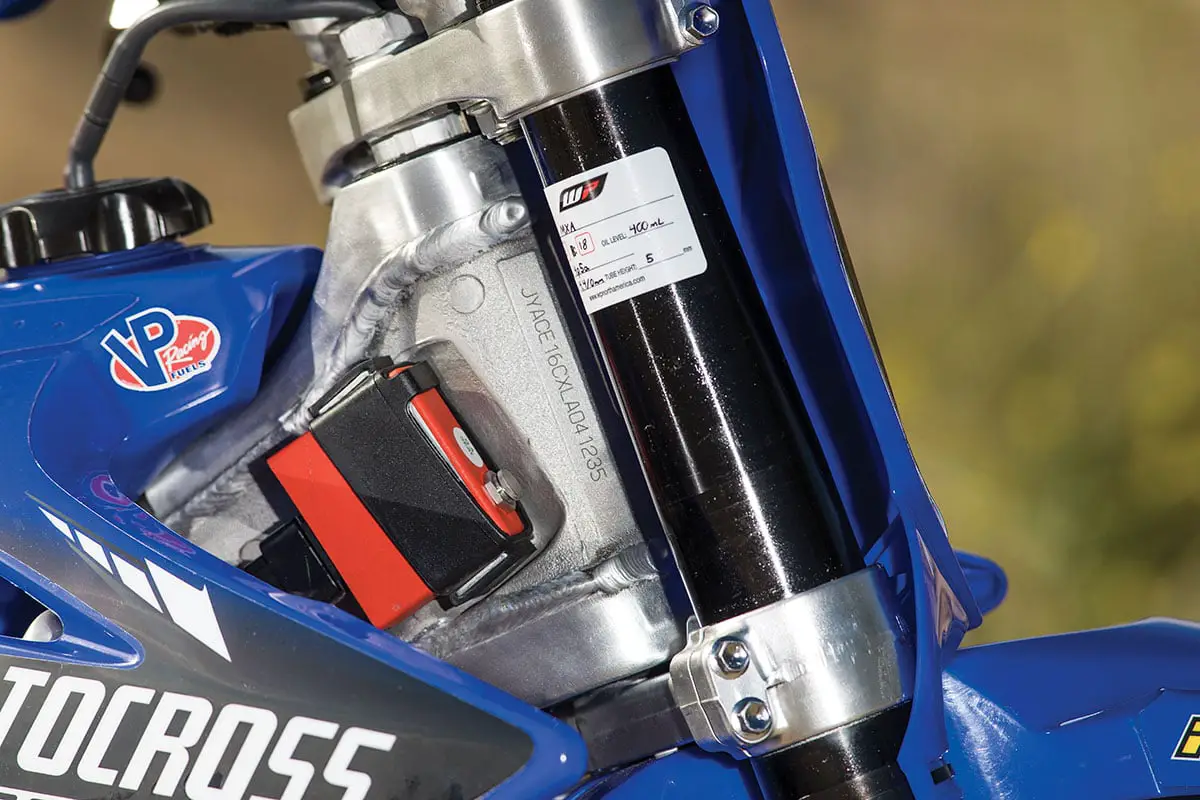
THE SOURCE
Choosing the man to build our YZ125 engine was a no-brainer. He is the greatest tuner in the history of motocross. His engines have won over 200 AMA Pro races and 20 AMA Championships. Going to Mitch Payton is like going to the top of the mount for heavenly guidance. We handed him our engine and never looked back; we knew it would be right.
Mitch milled the bottom of the YZ125 cylinder to lower the port timing, then he raised the ports back up with artistic curves, matched the power valve, staged the transfers and machined the cylinder head to make room for the piston to complete its stroke inside the head. Inside the head he reshaped the combustion chamber and squish band. Mitch added a special one-off Pro Circuit piston with a very thin 0.80mm single ring, a heavier flywheel (which most tuners would think was blasphemy) and a special YZ125 black box. A Moto Tassinari V-Force4R reed cage was bolted on, and the tank was filled with VP MRX02 with Castrol at 32:1.
The coupe de grace was when he handed us three Pro Circuit exhaust pipes to try. One was the YZ125 exhaust pipe that he calls the “rack” pipe. This is his bread-and-butter YZ125 pipe that fills up the racks of his warehouse. The second pipe was Ryan Villopoto’s personal pipe. It was built especially to Ryan’s power tastes. As for the third pipe. Pro Circuit has never sold Ryan’s YZ125RV pipe, but the demand is so great that Pro Circuit now offers a refined version of the YZ125RV pipe. We’ll get to the differences later.
Apart from the jetting, that was everything that went into our YZ125 engine. And, here is the jetting we ran with VP MRX02 fuel with Castrol at 32:1 (for our sea-level tracks and warm weather).
Main jet: 470
Pilot: 40
Needle: 6BFY43-74
Clip: 3rd
Air screw: 1.5 turns out
Slide: 4.0
THE SURPRISE
You may not like what we are going to say, but when it came to suspension components, we ash-canned the stock Kayaba SSS forks and shock in favor of WP Xact Pro Cone Valve components. Of course, the MXA wrecking crew knows that the stock Kayaba SSS forks and shock have an unmatched reputation for performance, because we are the ones that have tooted their horn for the last 14 years. But, now we are here to tell you that for a Pro racer who plans to race on a track as brutal as Glen Helen’s World Two-Stroke track, the WP Cone Valve suspension, built to our specs on both ends of the YZ125, is preferable.
Cone Valves are the go-to forks for thousands of serious KTM 250SXF, 350SXF and KTM 450SXF racers. No serious Pro is taking Cone Valves off their KTMs to mount a set of Kayabas, especially not Yamaha YZ125 Kayabas. This is a Pro choice, and because of the price, we don’t think that Amateur riders need to make this upgrade, but think about this: WP Xact Pro Cone Valve coil-spring forks are to 2020 what Showa A-kit forks were to 2002.
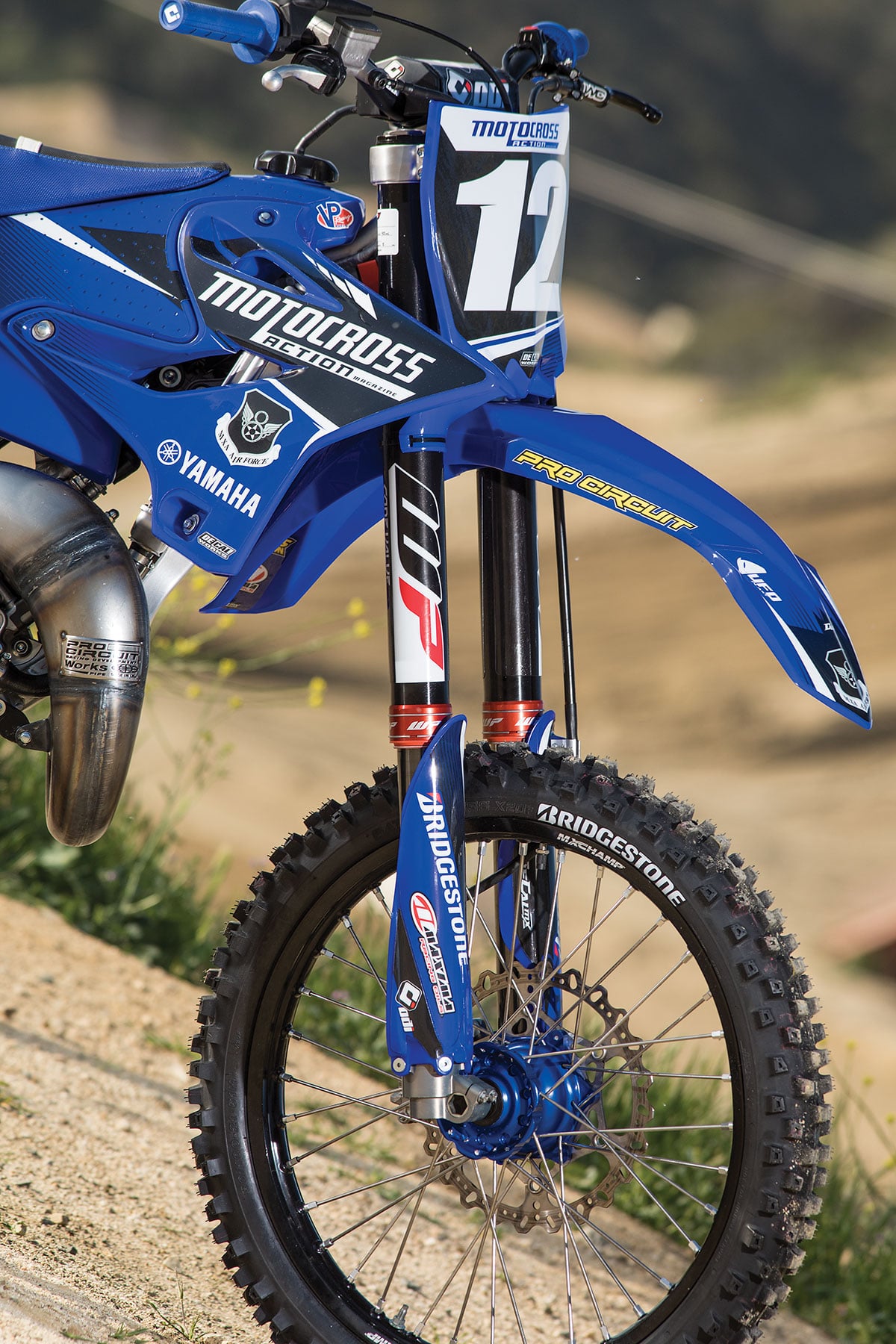
THE TRICKERY
The meat and potatoes of our 2020 Yamaha YZ125 project bike are the engine and the suspension, but every bike has to have its fair share of trickery—some of it necessary and some “fashion-ary.” Here is the list.
Clutch. We went with a Hinson billetproof clutch (basket, inner hub and pressure plate), along with a handful of stiffer clutch springs that we used in whatever number suited the hand strength of the test rider, but it was normally three stiff springs mated to the OEM springs. The clutch lever, but not the brake lever, came from Works Connection. We ran a Hinson clutch cover on the right side of the engine and a GYTR carbon fiber ignition cover on the left.
Gearing. On Ryan Villopoto’s 125 all-star-winning YZ125, he ran 13/53 gearing. We wish we were as good as Ryan, but we aren’t and elected to go with 13/51 using SuperSprox sprockets (an eventually switched to 13/52). Stock is 13/49, so you can see what both of us are trying to achieve with the six-speed Yamaha transmission.
Handlebars/grips. For handlebars, we went with ODI Podium Flight bars in a KTM bend. We dressed the bars with ODI glue-on grips.
Radiator cap. We exchanged the YZ125’s stock 1.1 kg/mm2 radiator cap for a higher-pressure CV4 2.0 kg/mm2 radiator cap. Why? The higher the cap’s pressure, the longer the water in your radiator will resist boiling. A 1.1 kg/mm2 radiator cap can handle 14.22 psi before the coolant pushes the valve open, while a 2.0 kg/mm2 cap ups the ante to 28.45 pounds.
Fuel. VP MRX02 fuel is arguably the best-performing two-stroke motocross fuel for modified engines. It is a 101.5-octane, leaded and oxygenated mixture (7 percent) that effectively delivers up to 8 percent more power than pump gas (if your engine needs high-octane fuel). It has slightly less oxygen than VP U4.4, but it actually makes more power.
Wheels. The stock wheels on our 2020 Yamaha YZ125 were a little worse for the wear, so out of an abundance of caution we ordered a set of MXChamp wheels from Las Vegas. MXChamp (MXC) hubs are made from a forged-aluminum billet hub with over-sized Japanese OEM-quality bearings. The MXC wheels are laced with ultra-strong T302H stainless spokes to triple heat-treated, black-anodized A90 rims. MXChamp wheels are 20-percent stronger than OEM wheels. If you are hopping up your engine, go with a 2.15-width rear rim so you can run a 110/90 rear tire.

Tires. We shod our YZ125 with Bridgestone X20 Castle Block intermediate-to-soft terrain tires front and rear. We remember when Bridgestone owned the National and Supercross ranks. In fact, when Ricky Carmichael switched from Bridgestone-equipped Team Kawasaki to Dunlop-sponsored Team Honda in 2002, the contingency guys would catch him on the starting line with Bridgestone tires on his Dunlop-sponsored Honda. Since its glory days, Bridgestone has pulled out of professional racing, which included motocross, Formula 1 and MotoGP, but Bridgestone is seriously back in the motocross fold now.
Triple clamps. If you expected to see black Yamaha triple clamps on our YZ125, you might have to look again. Since the WP forks fit perfectly in the stock YZ125 triple clamps, we decided to give the triple clamps a raw metal look. We achieved this with backyard ingenuity. We took the top and bottom clamps off and placed them in plastic Ziploc bags filled with aircraft paint stripper. We let them soak overnight and then brushed off the anodizing the next day. We polished the YZ125 frame to maximize the raw look.
Graphics. Decal Works handles not only the Motocross Action-themed graphics on the UFO blue plastic and stadium front number plate, but the custom $79.95 gripper seat cover in black on blue with white pleats.
Footpegs. We sent our 2020 Yamaha footpegs to MetalTek to have them mill off the stock Yamaha teeth and welded on a more aggressive set of teeth.

THE PROOF OF THE PUDDING
The proof of the pudding is in the eating, and the proof of MXA’s “World Two-Stroke Project YZ125” is in the racing.
HOW FAST WAS IT?
It is a rocket ship. In stock trim, a 2020 YZ125 makes 33.53 horsepower with 15.55 foot-pounds of torque. The Mitch Payton-engine pumped out 38.32 horsepower and 17.64 foot-pounds of torque. We’ll do the math for you. Our race engine was 4.8 horsepower up on the stocker and 2.1 foot-pounds of torque stronger.
The MXA test riders liked everything about the Pro Circuit YZ125 engine. It was stronger than the stocker at every point on the curve, pulled harder through the middle, and was planted to the ground, which we attributed to the heavier flywheel. Once the engine got to the working part of the rpm range, which on a 125 two-stroke is above 9500 rpm, it really came to life. It was not just fast; it had a broad pull through the midrange. It wasn’t a peaky, wide-open, all-or-nothing powerband; it was the strongest YZ125 engine we had ever ridden. Best of all, the YZ125 was no longer playing second fiddle to the KTM 125SX.
WHAT ABOUT THE PIPES?
Since Mitch gave us three exhaust pipes to try, we had every MXA test rider run through the pipes in a round-robin series of tests. On a big, fast track, they liked the rack pipe best because, although it was down 1 horsepower at 10,000 to Ryans’s pipe and limited edition YZ125RV pipe, it gained most of that back on top with more over-rev. The over-rev was a big deal for our Vet test riders, because it allowed them to bleed the engine dry at full tilt without having to shift.
Ryan Villopto’s actual race pipe was much stronger off the bottom and through the middle. It was especially good on the start, where it jumped out of the gate and never hesitated, which was in sharp contrast to the typical 125 engine that often exhibits a slight flat spot 10 feet out of the gate, requiring a little extra clutch. The only complaint about the Ryan’s pipe was that it had less over-rev than the rack pipe. The lack of over-rev is not a problem for a skilled rider like Ryan Villopoto. His goal is to get out front in the first 10 feet and use that thingy down by his left foot to keep the bike moving through the gears at speed. Ryan’s personal YZ125 pipe peaked at 11,500 rpm (38.32 horsepower), while the rack pipe peaked at 400 rpm later (37.92).
The third pipe was built to RV basic specs, but with more rev than the pipe that Ryan prefered. It was the best of the three pipes because it still had the low-end hit of the pipe off of Ryan’s personal YZ125, but carried over ito the top-end like the rack pipe. The YZ125 RV pipe cost a little extra, because Pro Circuit made a special run of them to satisfy rider looking for a little of what RV uses. The special for sale YZ125 RV pipe was a best of both world performer.
The three pipes were a conundrum. RV’s pipe was stronger, but didn’t carry as far as the slightly weaker rack pipe on a fast track; however, the tables turned when we went to a tighter, softer or trickier track that put the focus on acceleration out of corners. Ryan’s pipe laid waste to the Pro Circuit rack pipe on corner exit. That stronger bottom and middle made it the weapon of choice for Pros.
The rack pipe was liked by almost every test rider because it wanted to rev, and in typical 125 fashion gave up bottom end to get the rev.
In truth, you cannot get the pipe of Ryan’s race bike because it is tuned to Ryan’s particular skill set, talent and willingness to shift rather than rev. That only leaves two choices, the Pro Circuit rack pipe, which is pretty sweet and the YZ125RV special pipe which has a broader powerband than Ryan’s all-hit pipe. In the end it came down to rider skill (YZ125RV pipe) versus track layout (rack). We know which pipe Ryan chose, but we don’t know which pipe you’ll choose.
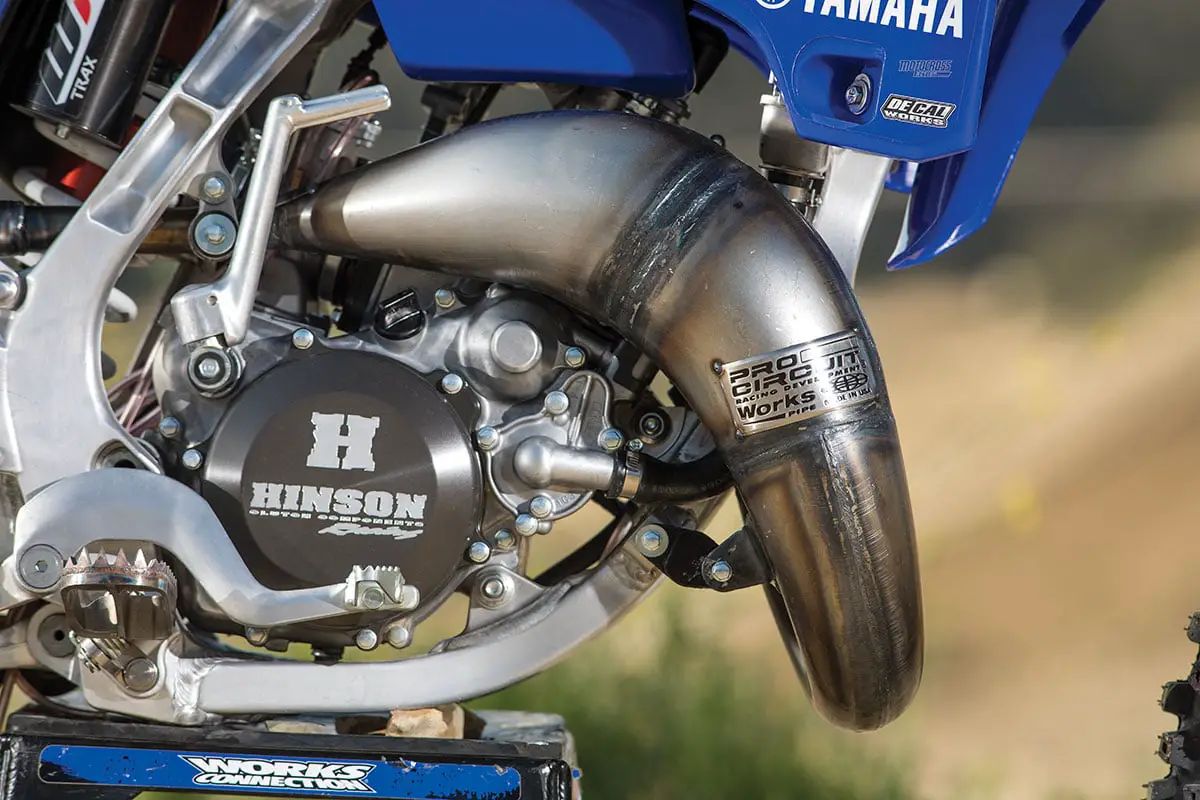
THE WP VERDICT?
We don’t think it is controversial to run WP Xact Cone Valve suspension on our Yamaha YZ125. It’s not like we took stock WP AER air forks off of a showroom KTM and put them on our YZ125. No, we took $4000 WP Cone Valve forks off the fastest KTMs and Huskys in the country. That may sound expensive, but it is cheaper than Showa A-kit or Kayaba Factory kit spring forks.
To a man, every test rider (slow, fast, young or old) thought the WP Xact Pro Spring forks were “awesome.” They delivered a metered and controlled style of travel, followed the ground at low shaft speeds and were plush through the mid-stroke, and progressively firmer as they got deeper into their travel. Test riders who had raced the YZ125 with modified stock Kayaba SSS forks said they would go WP all day long.
WHAT IT COSTS.
If you are trying to build the best 2020 Yamaha YZ125 in the country, expect to pay dearly for it. We spent over $2000 on the Pro Circuit engine mods (porting, head mods, VForce reeds, rack pipe, R-304 silencer and Hinson clutch), but had to pay extra for the heavier flywheel, black box, thin-ring piston and YZ125RV pipe. The WP Xact Cone Valve fork and Trax shock pushed $6500. And, the final big-ticket item was the MXChamp wheelset at $758 (with the wider rim).
Every other piece of the MXA’s World Two-Stroke Project YZ125 (bars, grips, graphics, plastic, sprockets, radiator cap and tires) came down to personal preference and involved costs that every YZ125 owner faces at some point during the lifespan of his YZ.
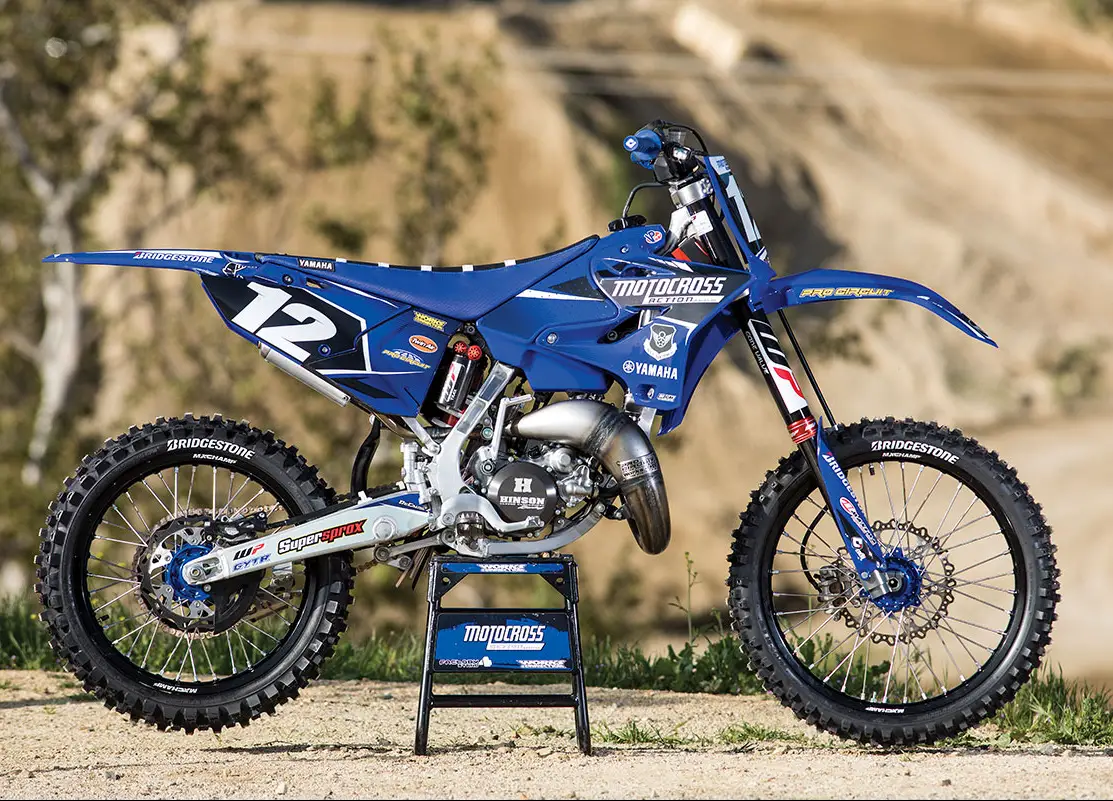
WHAT DO WE REALLY THINK?
The MXA wrecking crew can boil the most important thing that we did to our YZ125 down to sending the engine to Mitch Payton. Thanks because the most important thing about any 125 is how fast it is. Mitch gave our 2020 Yamaha YZ125 two-stroke almost 5 horsepower more than the stocker.
If you have limited money to spend on a hopped-up YZ125, spend every penny on the hop-up. You don’t need fancy wheels, exotic works forks or custom graphics. If it were us, we’d race a well-prepped beater with the Pro Circuit YZ125 engine in it over the prettiest garage queen on the planet with someone else’s engine in it. It’s that simple.




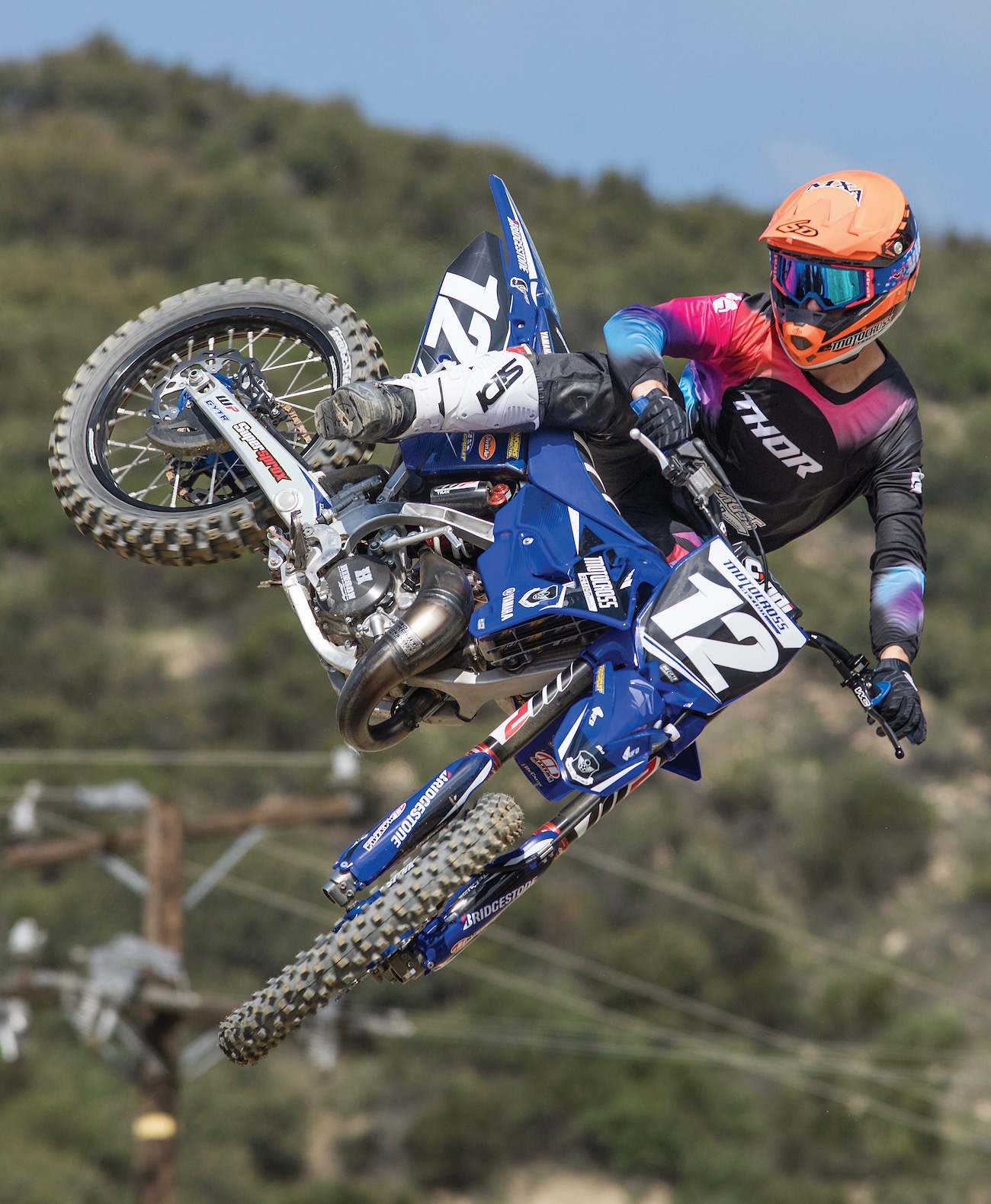
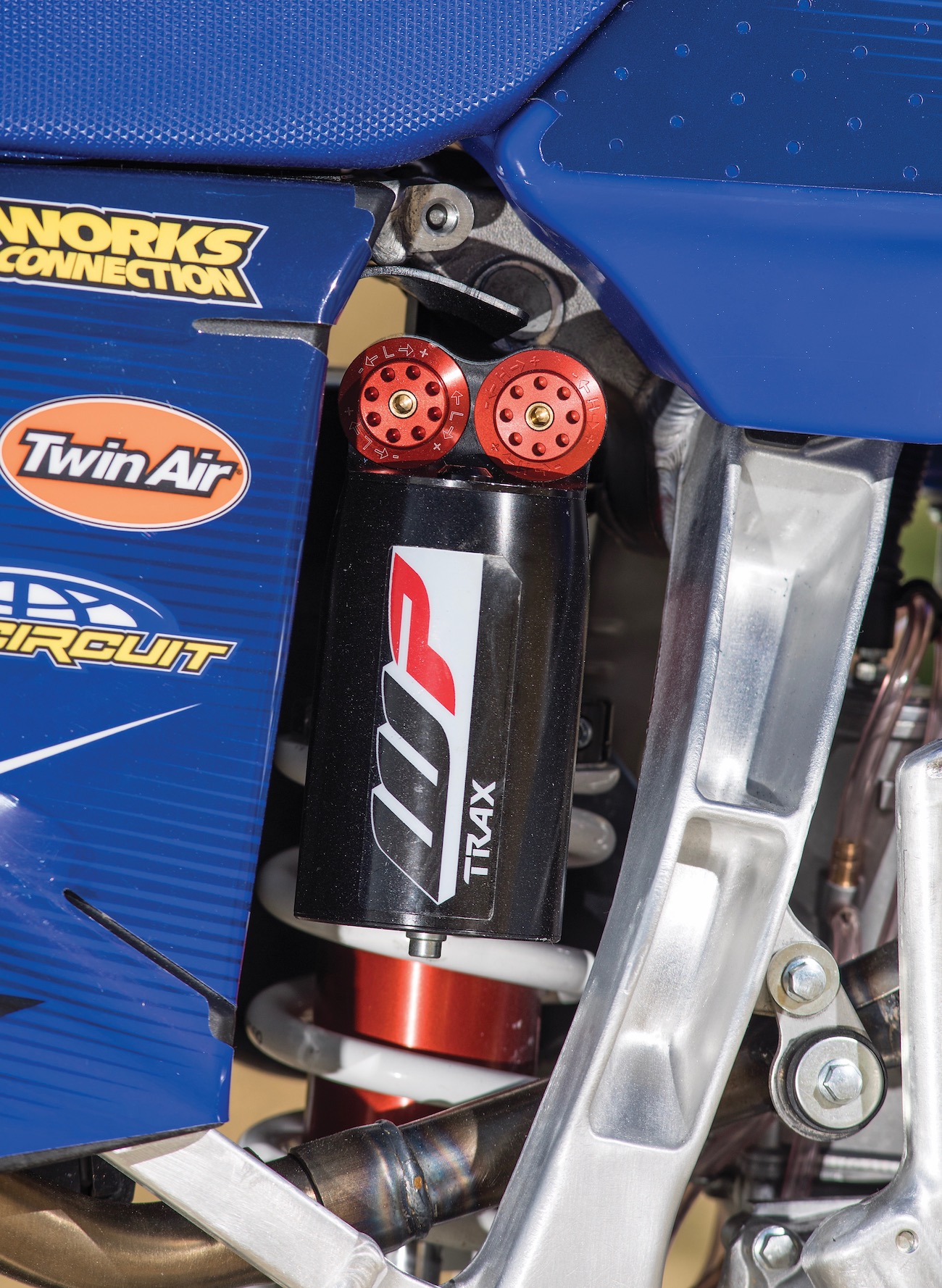
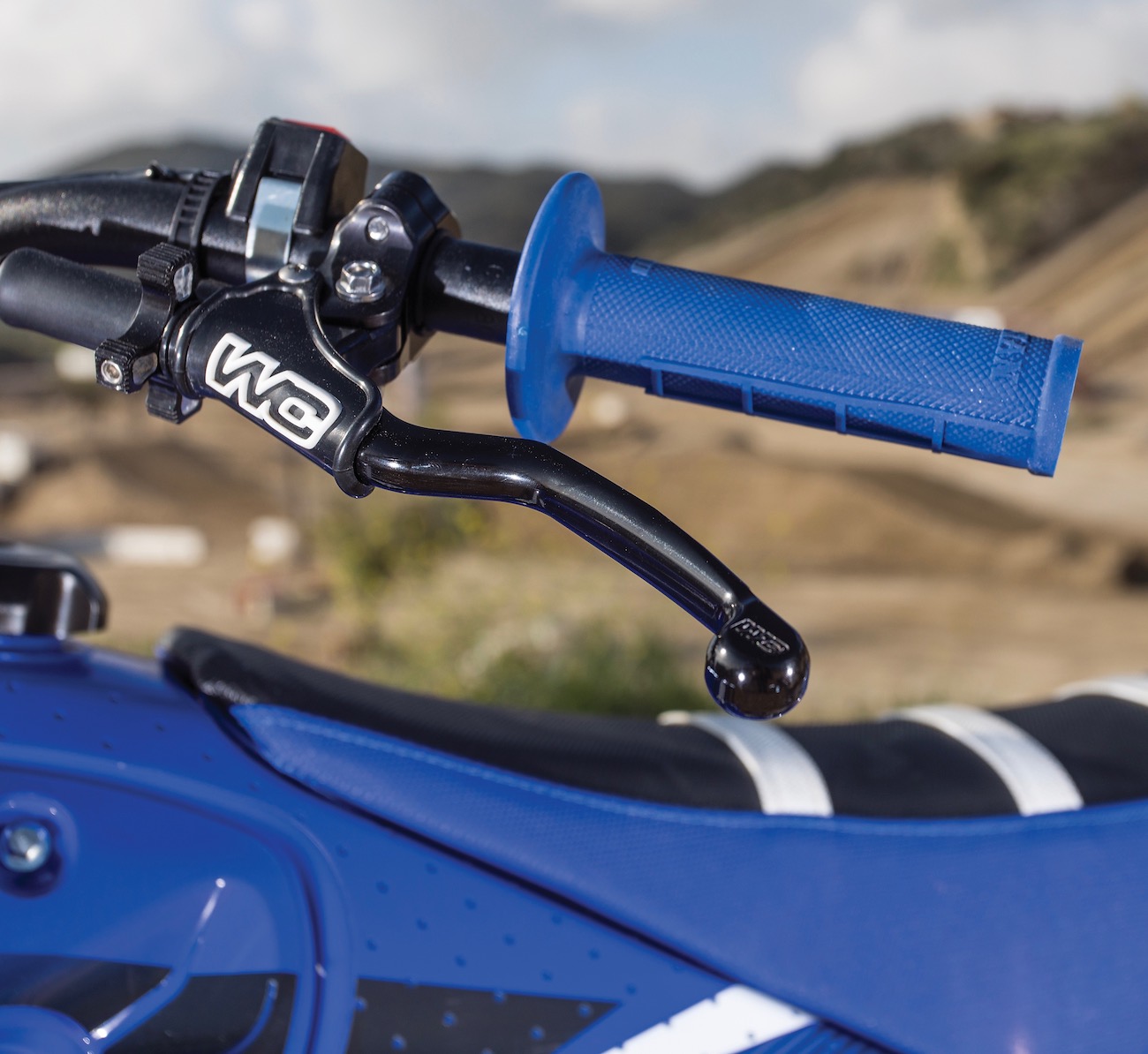





Comments are closed.